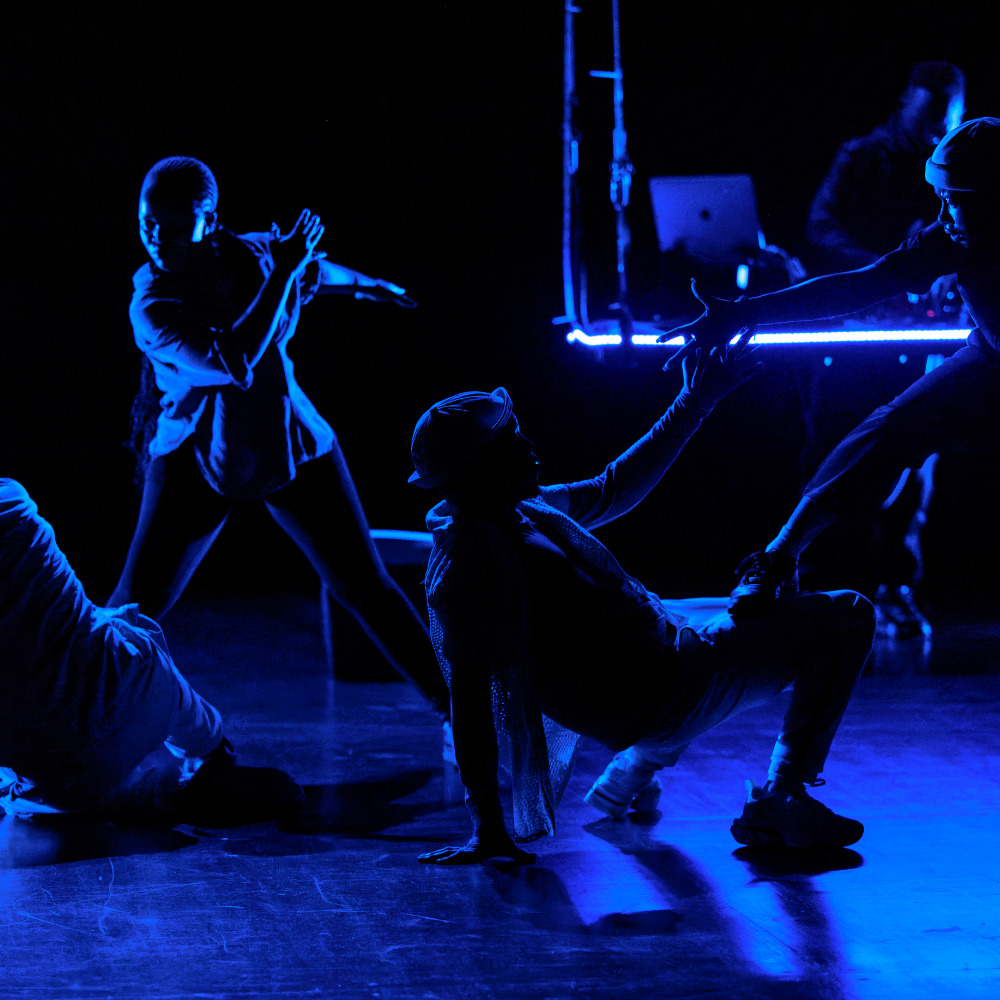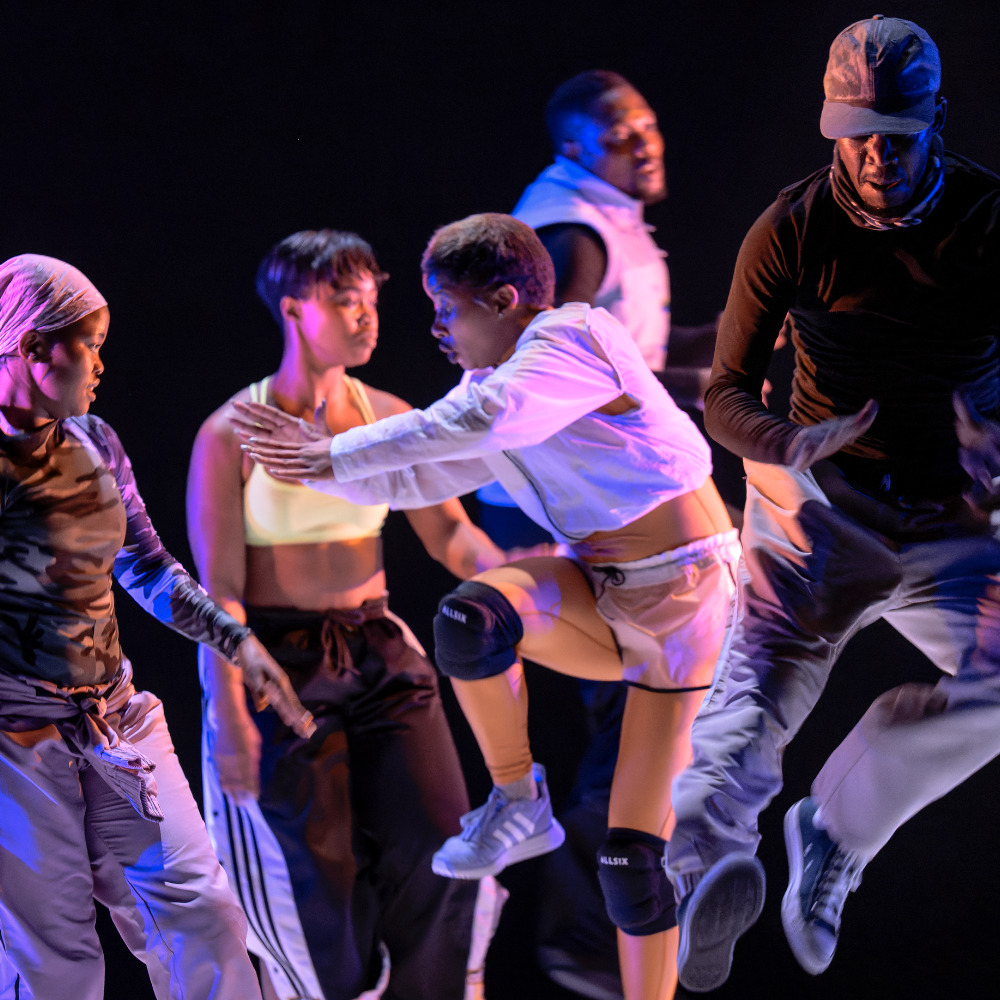Words by Francesca Matthys.
As a South African watching South African art in the UK or Europe, I wonder what the perceptions on African art are and what stereotypes may be expected from ‘African dance’. Perhaps bodies clad in loincloths dancing freely in a trance. A valid part of traditional African dance but only one part of the very vast spectrum.
Via Injabulo performed by dance collective Via Katlehong offers a new perspective on African dance theatre that brings South African street dance to the forefront through two new provocative works førm inførms choreographed by Marco da Silva Ferreira and Emaphakathini by Franco-Senegalese choreographer Amala Dianor.
The first work opens with an unexpected expression, with performer Thulisile Binda in a solo that contorts her face and body, portraying the black body as an object, as something that we observe with curiosity and fascination. A meditation on exploring the body unknown. She flaps her arms and holds her breath as if she is swimming through a sea of otherness as the ensemble of performers observe her attentively being watched by us.
As the work progresses, the sound of rhythmic feet creates a strong energetic current in the space that is not unusual with dance from the African Diaspora. Through these rhythmic explorations, the work abstracts the street dance ‘Pantsula’ and offers nuanced illustrations of gender performance through the female bravado. Pantsula is historically performed by men, though the number of female Pantusulas is constantly growing. The work offers a commentary on female power and expression and how this art form can serve as a catalyst for this empowerment through performance personas.
In this work, førm inførms we become familiar with the intricate and skilled footwork and strong form of Pantsula but also the high kicks of the traditional Indlamu, Zulu war dances, the smacking of gumboot dance as well as the vibrating stomps and raised fists that are synonymous with the protest history of South Africa. This is a mesmerising demonstration of how art, culture and the social landscape in South Africa are inherently connected and constantly in conversation. A reminder on how interdisciplinary art practice within South Africa is also an unspoken reality.
Another inherent element of the work that is captivating is the use of the whistle and voice to communicate during performance. It is almost as if through this act we blow the whistle on preconceived notions of black bodies connecting or expressing themselves on stage or even in the world as a whole.

In Emaphakathini we see the word ‘Injabulo’ present in the title and referring to joy or happiness in Zulu, truly become embodied as the performers explore celebration as an inspiration for movement. A DJ set and charismatic verbal address by one of the performers establishes the world of the work and initiates the audiences into the social context. We are immediately at ease and present with the nuances of being a human being in collective celebration.
With joy in their feet and hips, the performers are at home within the music as they playfully court and flirt as if on a night out. Though the work aims to ‘create a common new space, an “in-between-space”’ the balancing of alcohol cans on their heads, cooler boxes and general warmth present is a heartwarming familiarity for someone who is familiar with the context.
Joy rises and falls and enters into ominous territory as the performers sporadically pause with a heightened awareness of being watched. The reality is that through our action of watching the work, we commodify black joy and black experiences of emotions. We are able to feel its contagion but probably never truly grasp journeys of struggle that precede it, especially for many black South Africans, unless we have the lived experience of it.
During the post performance Q&A it is mentioned that the second work is largely improvised and determined by the collective mood of the cast. This sentiment is liberating as I would imagine it would allow the performers to author their experiences of the performance, especially in Europe, through dance forms that are integral to their identities.
Finally one of the words used in the performance that has stayed with me ‘Asambe!’ in Zulu, translating to ‘Let’s go!’ is poignant as an undercurrent for the entire double bill of works, as a continuation of resilience, strength and celebration of new narratives around black bodies in performance within the Western world.
